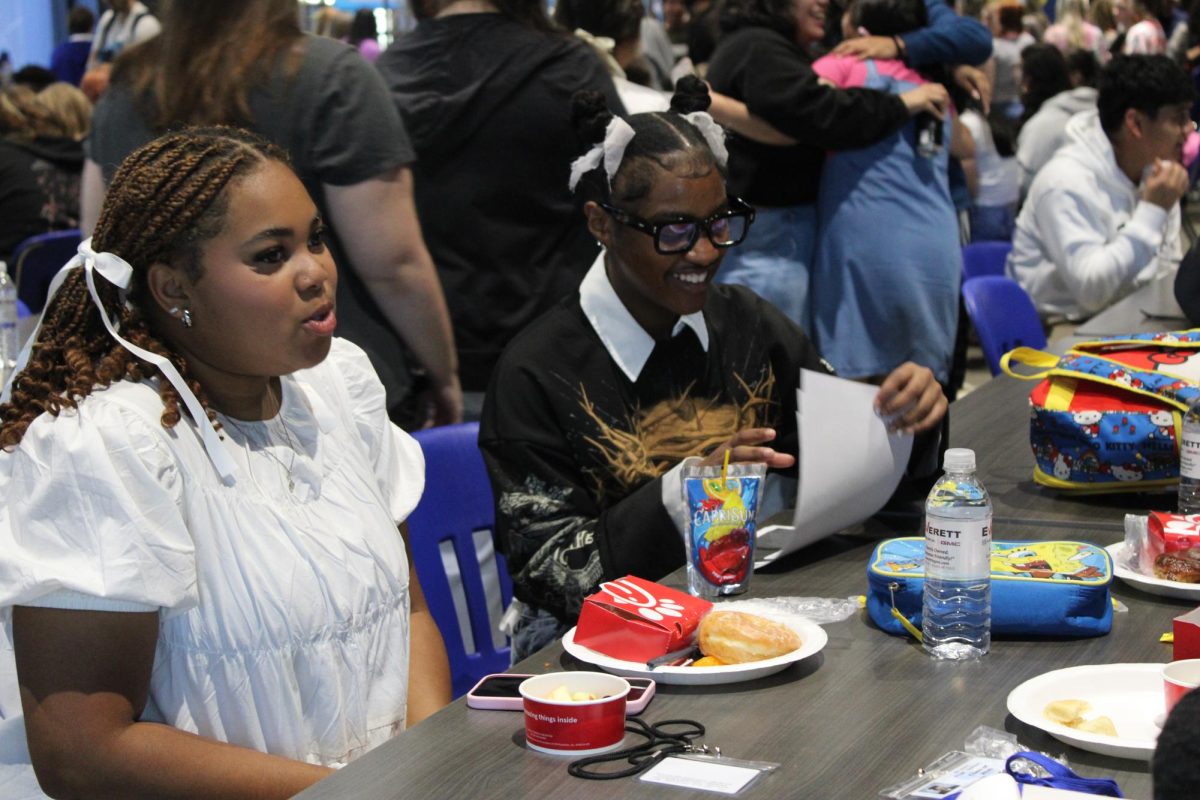 Arkansas law states that students are prohibited from wearing clothing that exposes underwear or body parts in an indecent manner that disrupts the learning environment. The handbook requires students to not wear any garment that exposes the body between the shoulder and four inches above the knee. All tops must have sleeve. Dresses and tops must not be open backed or show cleavage.
Arkansas law states that students are prohibited from wearing clothing that exposes underwear or body parts in an indecent manner that disrupts the learning environment. The handbook requires students to not wear any garment that exposes the body between the shoulder and four inches above the knee. All tops must have sleeve. Dresses and tops must not be open backed or show cleavage.
Found on page 84 of the Bryant Secondary Student Handbook, these are some of the first rules students will see about the dress code. Words such as cleavage or the idea that the clothing mentioned is oriented towards females has causes students to question gender bias.
In early May, the student handbook committee, selected by assistant principal Scott Curtis during the spring semester, met and discussed chosen topics from the student handbook.
“The way I form the committee is to ask for volunteers from the faculty, student body and the community,” Curtis stated. “Once the committee is formed, I ask for topics that the committee specifically wants to address in the student handbook. This year we had a sub-committee that specifically addressed the dress code at Bryant High School.”
The creation of the dress code is a long detailed process that includes the input of various faculty members and students. The committee that formed the 2015 Student Handbook consisted of 29 people, and of that there were 23 females and 6 males.
The committee can only send in suggestions for rule changes, which means the finalized student handbook will consist only of the rules and regulations that the school board approves.
“The purpose of the committee is to make recommendations to the Bryant School Board,” Curtis said. “It is the Bryant School Board that approves the policies and procedures that govern the students at Bryant High School. The Bryant School Board can either adopt, reject, or amend the recommendations from the handbook committee.”
The question still remains though is, in the opinions of the students, is the dress code gender biased?
“When we were coming up with ways we could change the dress code, we kept in mind what most students wanted,” junior Caelyn Neal said. “I honestly feel that the dress code is kind of gender biased because most of the regulations were directed towards female students. There really isn’t anything directed towards males unless it’s the sagging pants rule.”
Along with the aura of sexism, the question of comfort also comes into play.
“For females, we can’t dress comfortable because somehow it distracts the learning environment,” Neal said. “Mrs. McGohan and I agreed that there is nothing wrong with showing shoulders when learning because it’s not like a shoulder is sexy; everybody has those.”
Junior Abigail Washkowiak shared a similar view with Neal when it comes to the idea of a gender-biased dress code.
“I personally feel that dress code is mainly addressing girls because they ask girls to dress appropriate, cover up, etc. However I’m not saying they should expose themselves, but schools should be teaching guys to be more respectful towards ladies other than saying, ‘boys will be boys’, ”Washkowiak said. “And because ‘boys will be boys’, we as girls have to wear more during the summer, which causes us to be hot.”
Various committee members have expressed the feeling of equality and importance they had in the discussion of possible dress code changes.
“We were told our opinion was just as important and the faculty members and Mr. Curtis made us feel really important,” Neal said.
To some, the dress code is both fair and appropriate toward all students.
“I do not feel the dress code is gender biased. I think the committee makes their best attempt to insure that both sexes are treated equally,” said teacher Allen Scott.
In response to the issue of the clothing addressed, Scott said, “While some aspects are mainly directed at one particular gender that is because only one gender typically wears that type of clothing. For example, dress length. If a male were to wear a dress to school they would have to comply with the same length regulations.”
Teacher Dena Furton shared a similar view with Scott.
“I am asked all the time, why do we have to have a dress code? My response is because we are not at the beach or in a gym working out. This is an educational institution and when students put an effort into their dress, they tend to perform at a higher level. This is practice for a career,” she said.






